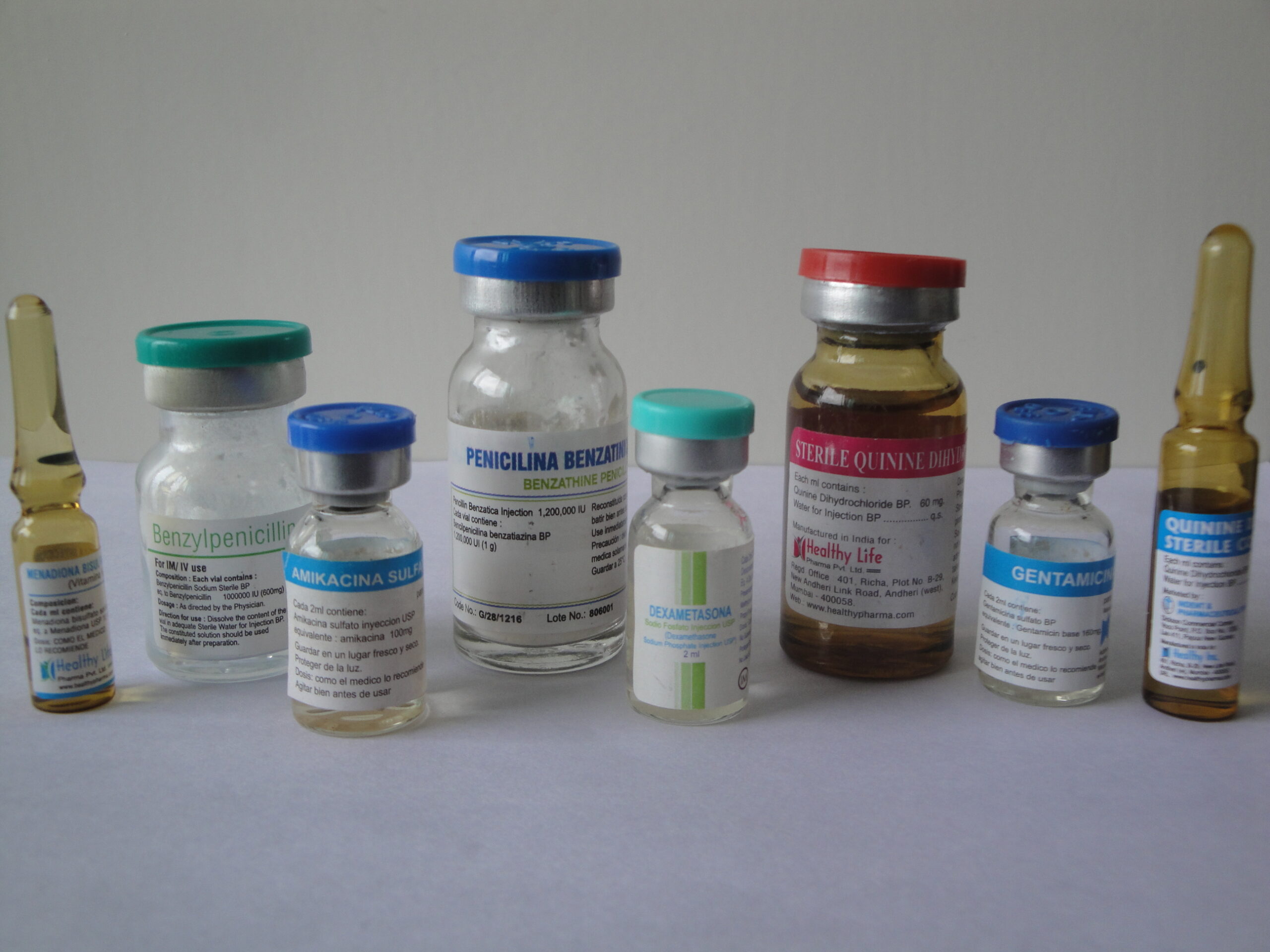Description
Amoxycillin & Dicloxacillin veterinary injection
Amoxicillin is a broad-spectrum antibiotic that belongs to the penicillin class. It is effective against a wide range of bacteria and is often used to treat respiratory, urinary tract, skin, and soft tissue infections in animals.
Dicloxacillin is also a penicillin-type antibiotic and is often used to treat staphylococcal infections in veterinary medicine. It is more specific to certain types of bacteria compared to amoxicillin.
The choice between amoxicillin and dicloxacillin, or a combination of both, depends on the specific type of bacterial infection and the susceptibility of the bacteria to these antibiotics. Additionally, the dosage and duration of treatment will be determined by the veterinarian based on the individual animal’s condition.
Never attempt to administer medications to animals without proper veterinary guidance. If you believe your pet requires antibiotic treatment, consult with a veterinarian who can assess the situation and prescribe the appropriate medication and dosage.
Amoxicillin and Dicloxacillin are commonly used antibiotics in veterinary medicine to treat bacterial infections in animals. However, the specific usage, dosage, and administration method should always be determined by a qualified veterinarian based on the individual animal’s condition. Here’s a general overview of their uses:
Amoxicillin:
Type: Amoxicillin is a broad-spectrum antibiotic from the penicillin class.
Uses:
Respiratory infections (pneumonia, bronchitis)
Skin and soft tissue infections
Urinary tract infections
Ear infections
Dental infections
Gastrointestinal infections
Administration:
Amoxicillin is available in various forms, including oral tablets, capsules, and injectable solutions.
Injectable formulations may be used when oral administration is not feasible or for more severe infections.
Dosage and frequency depend on the specific condition, the severity of the infection, and the animal’s weight.
Dicloxacillin:
Type: Dicloxacillin is a narrow-spectrum penicillin antibiotic, specifically effective against staphylococcal bacteria.
Uses:
Staphylococcal skin infections
Respiratory infections caused by Staphylococcus
Bone and joint infections
Administration:
Dicloxacillin is typically administered orally in the form of tablets or capsules.
Injectable formulations may be available for certain cases, but oral administration is more common.
Dosage and frequency depend on the specific condition, the severity of the infection, and the animal’s weight.
It’s crucial to stress that the use of antibiotics should be under the guidance of a veterinarian. They will consider factors such as the type of bacteria causing the infection, the animal’s health status, and potential allergies before prescribing the appropriate medication and dosage. Failure to use antibiotics correctly can lead to ineffective treatment and the development of antibiotic resistance. Always follow your veterinarian’s instructions and complete the full course of treatment as prescribed.
Amoxicillin and dicloxacillin are both antibiotics commonly used in veterinary medicine to treat bacterial infections in animals. When used in injectable forms, they are usually administered by a veterinarian. Here are some general considerations for their usage in veterinary injections:
Bacterial Infections: Both amoxicillin and dicloxacillin are effective against a variety of bacterial infections. They belong to the penicillin class of antibiotics and work by interfering with the bacterial cell wall synthesis.
Dosage: The dosage of these antibiotics will depend on various factors, including the type of infection, the severity of the condition, the species of the animal, and its weight. The veterinarian will determine the appropriate dosage for the specific case.
Route of Administration: Amoxicillin and dicloxacillin can be administered in various forms, including oral tablets and injectable solutions. Injectable forms are typically used when a more rapid onset of action is required, and the medication needs to be absorbed quickly into the bloodstream.
Frequency of Administration: The frequency of injections will be determined by the veterinarian based on the specific needs of the case. It may range from once daily to multiple times a day, depending on the severity of the infection.
Under Veterinary Supervision: It is crucial to administer these antibiotics under the supervision of a qualified veterinarian. The veterinarian will assess the animal’s health, diagnose the bacterial infection, and prescribe the appropriate treatment plan, including the type and dosage of antibiotics.
Complete Course: It’s important to complete the full course of antibiotics, even if the animal’s symptoms improve before the medication is finished. Failure to complete the prescribed course may lead to incomplete eradication of the bacteria, potentially causing a recurrence or the development of antibiotic-resistant strains.
Remember, the specific details of usage, including dosage and administration, should always be determined by a veterinarian who has examined the animal and considered its individual health condition. Self-administration of veterinary medications, including injections, without proper veterinary guidance is strongly discouraged.
The use of Amoxicillin and Dicloxacillin in veterinary medicine typically involves treating bacterial infections in animals. These antibiotics belong to the penicillin class and are used to combat various bacterial species.



